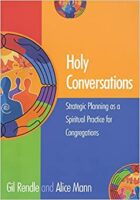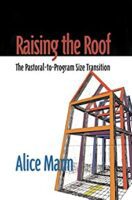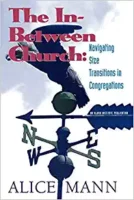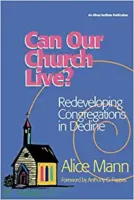[This article is part 1 of the series Crunch Time for Small Congregations.]
A smaller congregation may occasionally hit a temporary rough patch, cut back the clergy position to three-quarters or half-time, and then restore the full-time position when the immediate issue is resolved. Many of the challenges facing smaller congregations today, however, are less like hitting a “bump in the road” than they are like driving down a long, long grade into a mountain pass; the issues the congregation faces are long-term realities, and it often takes more permanent adjustments in thinking and practice to put the church’s life on solid footing. Restructuring ministry around a part-time clergy position is one option.
Small, Strong Congregations, by Kennon Callahan, identifies eight characteristics of strong small churches:
- They focus on “one excellent mission.”
- They are “compassion-driven.”
- They offer “widening circles of belonging.”
- They maintain a “consistent spirit of self-reliance.”
- Their worship “lifts heart and hope.”
- They consistently “live and share as a team.”
- Their facilities are “just enough” for their one excellent mission.
- They open “many doors of giving.”
In his discussion of “living and sharing as a team,” Callahan emphasizes that a congregation can have “too much pastor” for its own good. How can that be? Isn’t more always better?
For a small congregation with a clear, if modest, mission in its community, the answer may well be “no.” Small strong congregations know how to define and maintain a vibrant, small-scale ministry which is carried out primarily by its members—not its staff.
If the people truly have a heart for one well-defined mission in their community, the challenge is to have “just enough” building and “just enough” pastoring to support the members in this outward-oriented ministry. It is not easy, of course, to let go of burdensome (if memory-laden) facilities in favor of an affordable gathering-space. And (if the congregation is accustomed to a clergy-centered way of operating) it is not easy to let go of the idea of the pastor as the one who “provides ministry” here.
Congregations that know how to be “small and strong” are most often found in more isolated settings, where they have learned how to be the church consistently, with or without a pastor. They call on one another in illness or bereavement, pray with one another, reach out to neighbors, learn together in simple ways, and hold worship whether the preacher shows up or not.
Part-time pastors (who may serve more than one church, maintain secular employment, or serve the church after official retirement) may be a good fit for a church with a clear ministry focus within its community and a deeply-self reliant attitude.
For congregations “cutting back” to part-time ministry—perhaps for the first time— the transition to part-time ministry is usually very difficult. Churches often change the number of hours they finance without changing their understanding of clergy roles and responsibilities. This has several possible results:
- Clergy working full-time on a part-time salary. (This may create the impression that “part-time works fine” until the current pastor has to secure additional employment, or until a new pastor arrives who isn’t willing to silently subsidize the church in this way.)
- Nagging criticism of the clergy for not “being there” in the same way pastors have in the past. Clergy begin to resent the fact that the congregation has asked for one thing but expects another.
- Physical illness, depression, financial crisis, or conflict in the clergy family, which gets worse until the pastor finally leaves the position.
- Burn-out on the part of one or two lay leaders who are trying to fill gaps in the “old model” of ministry; other members have not really “stepped up” to share responsibility, but are still expecting one or two people to “do” the ministry for them.
In short, the first stages of transition away from a full-time, salaried clergy position are apt to be difficult and disappointing. If, however, there is consistent work to develop the characteristics of the “small, strong congregation,” this pain may give way to a more sustainable way of being church together.
Beginning with the “worker-priest” movement in France after World War II, the concept of “bi-vocational” clergy has continued to develop to the present day— sometimes called “tent-making ministry” after the biblical model of St. Paul who earned his own living. Some clergy experience a strong sense of call to a role outside the church; on weekdays, they serve as counselors, administrators, teachers, scientists, shop-keepers, accountants, or full-time parents. Other clergy may feel a primary call to congregational ministry, but wish to serve in settings where there is no livable salary available; in order to fulfill this vocation, they hold a “day job” that pays the bills.
Many independent, storefront churches in urban areas are founded and pastored by such entrepreneurial leaders. Option 4 in this article identifies denominational frameworks within which self-supporting community residents may prepare to take up pastoral roles in local congregations.
[Return to the series Crunch Time for Small Congregations.]
Alice Mann is a leading consultant, educator, and author in the field of congregational development, whose work has focused on strategic planning, breaking through size plateaus, creating new pathways for small and struggling churches, and helping congregations to discern and care for the “soul” of their local community. Mostly retired from consulting and teaching, Alice is an active member of a small, engaged urban congregation and also offers leadership for faith-based community organizing in her region. She occasionally accepts one-time conversations with former clients and other church leaders on issues close to her heart.
Books by Alice Mann





